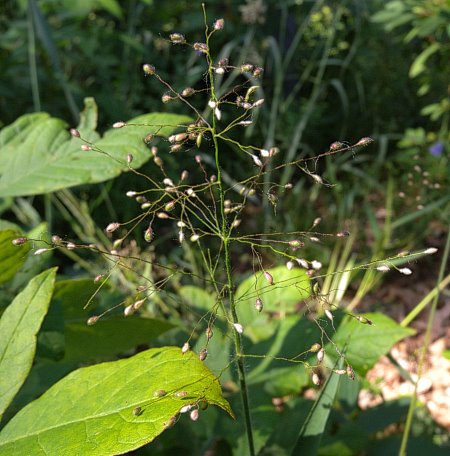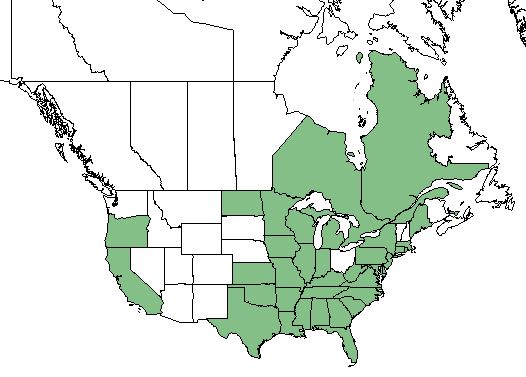Difference between revisions of "Dichanthelium villosissimum"
(→Ecology) |
(→Distribution) |
||
| Line 27: | Line 27: | ||
==Distribution== | ==Distribution== | ||
| + | This species is found from Maine and Massachusetts south to Florida and westward to Texas, the Dakota's, Nebraska, Kansas, and Oklahoma. It is also recorded in Oregon and California as well as eastern Canada and parts of Mexico and Mesoamerica.<ref name="Weakley 2015"/><ref name="USDA"/> | ||
| + | |||
==Ecology== | ==Ecology== | ||
===Habitat=== <!--Natural communities, human disturbed habitats, topography, hydrology, soils, light, fire regime requirements for removal of competition, etc.--> | ===Habitat=== <!--Natural communities, human disturbed habitats, topography, hydrology, soils, light, fire regime requirements for removal of competition, etc.--> | ||
Revision as of 15:23, 7 December 2017
| Dichanthelium villosissimum | |
|---|---|

| |
| Photo by Illinois Wildflowers | |
| Scientific classification | |
| Kingdom: | Plantae |
| Division: | Magnoliophyta - Flowering plants |
| Class: | Liliopsida - Moncots or Magnoliopsida - Dicots |
| Order: | Poales |
| Family: | Poaceae |
| Genus: | Dichanthelium |
| Species: | D. villosissimum |
| Binomial name | |
| Dichanthelium villosissimum (Nash) | |

| |
| Natural range of Dichanthelium villosissimum from USDA NRCS Plants Database. | |
Common Name(s): white-haired witchgrass, whitehair rosette grass[1][2]
Contents
Taxonomic Notes
Variation(s): Dichanthelium villosissimum var. villosissimum; D. villosissimum var. praecocius[1][2]
Description
D. villosissimum is a monoecious perennial graminoid. [2]
Distribution
This species is found from Maine and Massachusetts south to Florida and westward to Texas, the Dakota's, Nebraska, Kansas, and Oklahoma. It is also recorded in Oregon and California as well as eastern Canada and parts of Mexico and Mesoamerica.[1][2]
Ecology
Habitat
D. villosissimum is found in dry sandy soils of open woodlands and prairies.[1]
Phenology
Flowering and fruiting occur between April and September.[1]
Conservation and Management
Cultivation and restoration
Photo Gallery
References and notes
- ↑ 1.0 1.1 1.2 1.3 1.4 Weakley A. S.(2015). Flora of the Southern and Mid-Atlantic States. Chapel Hill, NC: University of North Carolina Herbarium.
- ↑ 2.0 2.1 2.2 2.3 USDA, NRCS. (2016). The PLANTS Database (http://plants.usda.gov, 30 November 2017). National Plant Data Team, Greensboro, NC 27401-4901 USA.